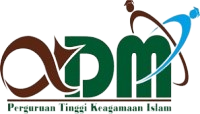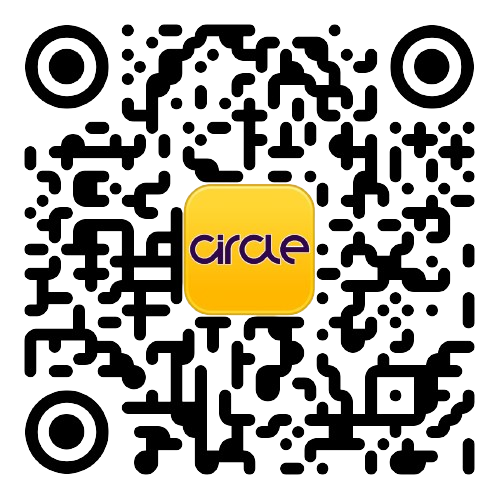Eksplorasi Arsitektur Masjid Agung Sang Cipta Rasa Cirebon sebagai Bahan Ajar Matematika
Keywords:
Architecture, Culture, Mathematics ModuleAbstract
Integrating cultural context into teaching and learning activities can help students understand the material. However, the development of teaching materials that integrate local cultural contexts is still not widely practiced. This study aims to (1) describe the results of exploring the architecture of the Grand Mosque of Sang Cipta Rasa Cirebon as a teaching material for mathematics, (2) determine students' responses to the mathematics teaching material resulting from the exploration of the architecture of the Grand Mosque of Sang Cipta Rasa Cirebon, and (3) determine the difference in mathematics learning outcomes before and after using the mathematics module. This study applied the ADDIE development model (Analysis, Design, Development, Implementation, Evaluation). In the architecture of the Grand Mosque of Sang Cipta Rasa, concepts of two-dimensional shapes such as triangles and quadrilaterals were found, including squares, rectangles, trapezoids, and rhombuses. The expert validation results show that the developed mathematics module is highly feasible to implement, with percentages of content, presentation, and language feasibility aspects reaching 88%, 90%, and 89% respectively. Students' responses to the mathematics module were categorized as good (71%). Paired sample t-test results show that students' learning outcomes before and after using the developed mathematics module are significantly different, with higher learning outcomes after using the mathematics module compared to before its use. Thus, the mathematics module resulting from the exploration of the architecture of the Grand Mosque of Sang Cipta Rasa Cirebon can be implemented in learning to improve mathematics learning outcomes.
References
Ayuningtyas, A. D., & Setiana, D. S. (2019). Pengembangan Bahan Ajar Matematika Berbasis Etnomatematika Kraton Yogyakarta. AKSIOMA: Jurnal Program Studi Pendidikan Matematika, 8(1), 11-19.
Clarisa, A. B. (2019). Pengembangan Modul Pembelajaran Matematika dengan Pendekatan STEM (Science, Technology, Engineering, and Mathematics) pada Materi Segiempat dan Segitiga untuk Kelas VII SMP Negeri 2 Darul Hasanah. Lampung: Universitas Islam Negeri Raden Intan Lampung.
Fajriah, N., Suryaningsih, Y., Kamaliyah, K., Budiarti, I., Adawiyah, R., Nasrullah, N., & Amalia, Z. (2022). Eksplorasi etnomatematika dalam pembelajaran geometri untuk meningkatkan literasi siswa. Bubungan Tinggi: Jurnal Pengabdian Masyarakat, 4(1), 268-278. https://doi.org/10.20527/btjpm.v4i1.4369
Faturrahman, M., & Soro, S. (2021). Eksplorasi Etnomatematika pada Masjid Al-Alam Marunda Ditinjau dari Segi Geometri. Jurnal Cendekia: Jurnal Pendidikan Matematika, 5(2), 1955-1964.
Kusna, A. (2023, January). Pengembangan buku ajar berbasis etnomatematika pada arsitektur masjid agung demak terhadap materi segi empat dan segitiga. In ProSANDIKA UNIKAL (Prosiding Seminar Nasional Pendidikan Matematika Universitas Pekalongan) (Vol. 4, No. 1, pp. 481-488).
Luthfiani, M. I., & Nalim, Y. (2022). Aktivitas Etnomatematika Pada Kearifan Budaya Lokal Masyarakat Pesisir Kota Pekalongan. Delta: Jurnal Ilmiah Pendidikan Matematika, 10(2), 407-412.
Mamik. (2015). Metodologi Kualitatif. Sidoarjo: Zifatama Publishing.
Pranoto, I., Budhi, W. S., Gunawan, H. (2013, December 14). Hasil PISA 2022, Matematika Indonesia masih Stagnan. Media Indonesia. https://mediaindonesia.com/opini/637150/hasil-pisa-2022-matematika-indonesia-masih-stagnan#:~:text=Mungkin%20seperti%20sudah%20diperkirakan%20penurunannya,sementara%20rerata%20OECD%20sebesar%20472.
Purwasih, R. (2015). Peningkatan kemampuan pemahaman matematis dan self confidence siswa mts di kota cimahi melalui model pembelajaran inkuiri terbimbing. Didaktik, 9(1), 16-25.
Rahmawati, F. D. (2017). Pengembangan Bahan Ajar Berbasis Etnomatematika Untuk Meningkatkan Prestasi Dan Motivasi Belajar Siswa SMP. Jurnal Pedagogi Matematika, 6(6), 69-76.
Riyani, W. (2020). Pengembangan Modul Berbasis Stem Pada Materi Perubahan Lingkungan Untuk Siswa SMA [Skripsi, Universitas Negeri Semarang]. Universitas Negeri Semarang. https://lib.unnes.ac.id/42057/.
Rusmayana, T. (2021). Model pembelajaran ADDIE integrasi Pedati di SMK PGRI Karisma Bangsa sebagai pengganti praktik kerja lapangan di masa pandemic Covid-19. Bandung: Widina Bhakti Persada Bandung.
Sarwoedi, S., Marinka, D. O., Febriani, P., & Wirne, I. N. (2018). Efektifitas etnomatematika dalam meningkatkan kemampuan pemahaman matematika siswa. Jurnal Pendidikan Matematika Raflesia, 3(2), 171-176.
Sintiya, M. W., Astuti, E. P., & Purwoko, R. Y. (2021). Pengembangan e-modul berbasis etnomatematika motif batik adi purwo untuk siswa smp. Jurnal Pendidikan Matematika Raflesia, 6(1), 1-15.
Supriadi, N. (2015). Mengembangkan kemampuan koneksi matematis melalui buku ajar elektronik interaktif (BAEI) yang terintegrasi nilai-nilai keislaman. Al-Jabar: Jurnal Pendidikan Matematika, 6(1), 63-74.
Trisnawati, D., Purwanti, K. L., & Fahmy, A. F. R. (2022). Development of Two-Dimentional Geometry Module based on APOS Theory for 4th Grader Students. Eduma: Mathematics Education Learning and Teaching, 11(1), 97-108.
Downloads
Published
How to Cite
Issue
Section
License
Copyright (c) 2024 Niken Nirvania Thifaliani, Herani Tri Lestiana, Indah Nursuprianah

This work is licensed under a Creative Commons Attribution-ShareAlike 4.0 International License.










